Crops
-
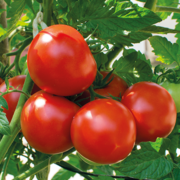
Tomatoes
The pests affecting tomato crops will vary between Northern European and Mediterranean climate zones. Control techniques will also vary depending on crop conditions and climate, as some beneficial species which work well in Northern European climates do not work well in Mediterranean zones. Cultivar also has a significant impact on pest problems and beneficial use. Cherry tomato varieties are particularly susceptible to some pests, and can also be damaged by Macrolophus spp (Macroline). Note that beneficial mites or insects may require licences or permits for use in some countries and, therefore, some of the species listed below may not be available.
-
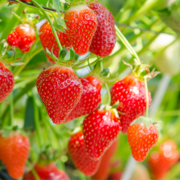
Strawberries
The pests affecting strawberry crops will vary between protected and open field growing, and from northern to southern climate zones. Control techniques will also vary depending on crop conditions. Strawberries attract very many species of aphids, and populations can develop too rapidly for parasitoids to perform well. Predators that will feed on a wide range of aphid species therefore offer better control. Note that some beneficial mites or insects may require licences or permits for use in some countries and, therefore, some of the species listed below may not be available.
-

Raspberries
The pests affecting raspberry crops will vary between protected and open field growing, and from northern to southern climate zones. Control techniques will also vary depending on crop conditions. Raspberries attract very many species of aphids, and populations can develop too rapidly for parasitoids to perform well. Predators that will feed on a wide range of aphid species therefore offer better control. Note that some beneficial mites or insects may require licences or permits for use in some countries and therefore, some of the species listed below may not be available.
-
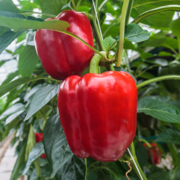
Peppers
The pests affecting pepper crops will vary between Northern European and Mediterranean climate zones. Control techniques will also vary depending on crop conditions and climate, as some beneficial species which work well in Northern European climates do not work well in Mediterranean zones. Cultivar is also important: in particular, varieties tolerant of the thrips-transmitted virus disease Tomato Spotted Wilt Virus are less sensitive to thrips. Note that some beneficial mites or insects may require licences or permits for use in some countries and, therefore, some of the species listed below may not therefore be available.
-

Ornamental pot plants
The range of potted plants is too large to allow treatment of each type individually on this web site. Individual species or varieties may only suffer from one or two of the pests listed below, whilst others will suffer from a wider range of pests. There may also be pests that are specific to some ornamental plants which are not listed below. Tolerance of pests may be very low for aesthetic reasons, and biological control agents need to be chosen and used carefully to achieve control. Note that beneficial mites or insects may require licences or permits for use in some countries, and that some of the species listed below may not therefore be available.
-

Melons
The pests affecting melons crops will vary between crop types and planting dates. Control techniques will also vary depending on crop conditions and climate, as some beneficial species which work well at certain times of the year but not so well at other times. Note that some beneficial mites or insects may require licences or permits for use in some countries and, therefore, some of the species listed below may not be available.
-
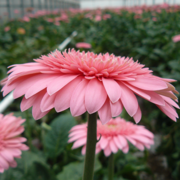
Cut flowers
The range of plants used for cut flower production is too large to allow treatment of each type individually on this website. Individual species or varieties may only suffer from one or two of the pests listed below, whilst others will suffer from a wider pest range. There may also be pests, specific to some cut flowers, which are not listed below. Sensitivity to pests is also high because of the stringent aesthetic criteria applied by flower markets and customers. Note that some beneficial mites or insects may require licences or permits for use in some countries and, therefore, some of the species listed below may not be available.
-
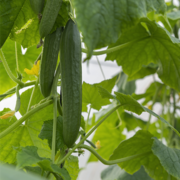
Cucumbers
The pests affecting cucumber crops will vary between Northern European and Mediterranean climate zones. Control techniques will also vary depending on crop conditions and climate, as some beneficial species which work well in Northern European climates do not work well in Mediterranean zones. Note that some beneficial mites or insects may require licences or permits for use in some countries and, therefore, some of the species listed below may not be available.
-
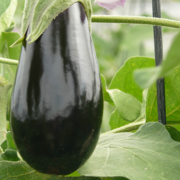
Aubergines
The pests affecting aubergine crops will vary between Northern European and Mediterranean climate zones. Control techniques will also vary depending on crop conditions and climate, as some beneficial species which work well in Northern European climates do not work well in Mediterranean zones. Note that some beneficial mites or insects may require licences or permits for use in some countries and, therefore, some of the species listed below may not be available.
-
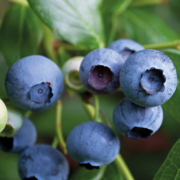
Blueberries
The pests affecting blueberry crops will vary between protected and open field growing, and from northern to southern climate zones. Control techniques will also vary depending on crop conditions. Blueberries have fewer pest problems than most other fruits but these pests can be highly specific. The blueberry aphid Illinoia pepperi transmits the Blueberry Shoestring Virus so control of the aphids needs to aim to prevent spread of the virus via the aphids. Note that some beneficial mites or insects may require licences or permits for use in some countries and, therefore, some of the species listed below may not be available.
